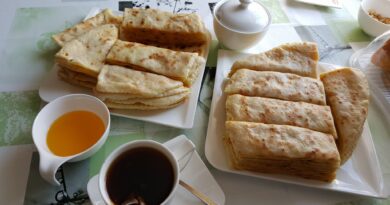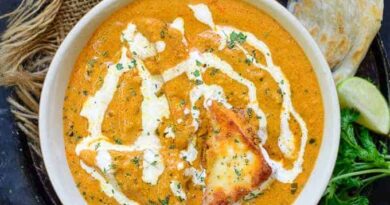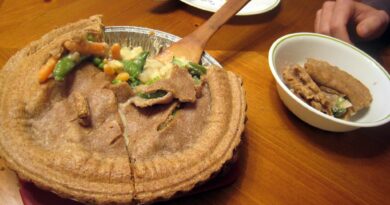Tapalapa bread
Tapalapa Bread: Unraveling the Culinary Tapestry of Senegal’s Signature Loaf
Introduction
In the sun-kissed land of Senegal, where vibrant traditions and rich flavors converge, one culinary delight stands out as a symbol of local pride and heritage: Tapalapa bread. This uniquely Senegalese bread has woven itself into the fabric of daily life, gracing tables across the country with its distinctive taste and cultural significance. Join us on a journey as we explore the origins, ingredients, preparation, and cultural importance of Tapalapa bread.
Origins of Tapalapa Bread
Tapalapa bread, often simply called “Tapalapa,” has deep roots in Senegal’s culinary history. It is a ubiquitous presence in both urban centers and rural communities, embodying the essence of Senegalese cuisine. The name “Tapalapa” itself is believed to be an onomatopoeic term, mimicking the sound of the crust when tapped or knocked. This indigenous bread has been a staple in Senegalese households for generations, a constant companion to savory stews, grilled meats, and vibrant salads.
The precise origin of Tapalapa is intertwined with Senegal’s colonial history and its geographical location. Senegal, with its coastal setting, has been a melting pot of cultural influences, blending indigenous traditions with those brought by European colonizers and other global visitors.
Ingredients that Define Tapalapa Bread
The beauty of Tapalapa lies in its simplicity, yet the combination of key ingredients imparts a unique character to this Senegalese bread. The fundamental components include:
- Flour: Tapalapa bread is typically made with wheat flour, contributing to its soft and chewy texture. The choice of flour may vary, with some variations incorporating a mix of white and whole wheat flour for added depth.
- Water: The hydration level is crucial in achieving the desired consistency of the dough. The water used in Senegal’s Tapalapa bread often reflects the country’s purity, sourced from local wells or rivers.
- Yeast: To leaven the bread and impart the characteristic rise, yeast is added to the dough. This essential ingredient contributes to the airy and light quality of Tapalapa.
- Salt: Balancing the sweetness of the wheat flour and enhancing the overall flavor, salt is a key seasoning in Tapalapa bread.
- Sugar: A modest amount of sugar may be included, contributing to the flavor profile and aiding in the fermentation process.
- Millet Flour (Optional): In some variations of Tapalapa, millet flour may be added, bringing a nutty and earthy undertone to the bread.
Preparation of Tapalapa Bread
The art of making Tapalapa involves a series of steps that require skill, patience, and a deep understanding of the dough. The general process unfolds as follows:
- Mixing the Ingredients: Flour, water, yeast, salt, and sugar are combined to form a cohesive dough. The mixture is kneaded until it reaches a smooth and elastic consistency.
- Rising: The dough is left to rise, allowing the yeast to work its magic and create airy pockets within the bread. This step is crucial in achieving the desired texture.
- Shaping: Once risen, the dough is shaped into the characteristic round or oval form that defines Tapalapa. The shaping process may involve scoring the surface with distinctive patterns, adding an artistic touch.
- Second Rise: The shaped dough undergoes a second rise, further developing its structure and flavor.
- Baking: The risen dough is then baked to perfection. The result is a golden-brown crust that encases a soft and pillowy interior, creating a delightful contrast in textures.
Cultural Significance of Tapalapa Bread
Tapalapa bread is more than just a culinary creation; it holds a special place in Senegalese culture and daily life. Its significance can be observed in various aspects:
- Daily Staple: Tapalapa is a fundamental part of the Senegalese diet, serving as a reliable and versatile accompaniment to various meals. It is commonly enjoyed with stews, grilled meats, fish, and a variety of flavorful sauces.
- Symbol of Hospitality: In Senegal, offering Tapalapa to guests is a gesture of hospitality and warmth. Sharing a meal, especially one centered around Tapalapa, is a cultural tradition that fosters connection and community.
- Ceremonial Occasions: Tapalapa bread plays a role in ceremonial occasions and celebrations. Whether it’s a family gathering, a religious event, or a festive feast, Tapalapa is often present on the table, symbolizing unity and abundance.
- Economic Importance: The production and sale of Tapalapa contribute significantly to the local economy. Bakeries, both small-scale and larger operations, are integral parts of communities, providing employment and sustenance.
- Artistic Expression: The scoring and shaping of Tapalapa allow for artistic expression. Bakers often showcase their skill by creating intricate patterns on the bread’s surface, turning each loaf into a work of edible art.
- Culinary Heritage: Tapalapa reflects Senegal’s culinary heritage, blending influences from various cultures and regions. Its preparation and consumption are deeply ingrained in the cultural identity of the Senegalese people.
Conclusion
In the vibrant mosaic of Senegalese cuisine, Tapalapa bread emerges as a shining star, representing the intersection of tradition, flavor, and cultural significance. Its journey from a basic combination of flour and water to a beloved daily staple mirrors the resilience and creativity of Senegal’s culinary landscape.
As you savor the soft interior and crusty exterior of a freshly baked Tapalapa, you partake in a culinary tradition that has withstood the test of time. Whether enjoyed with a hearty stew, grilled meats, or a simple spread of butter, Tapalapa bread invites you to experience the heart and soul of Senegal, one delicious bite at a time.



